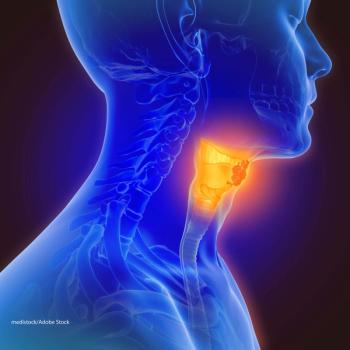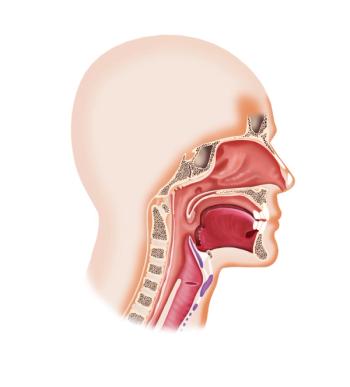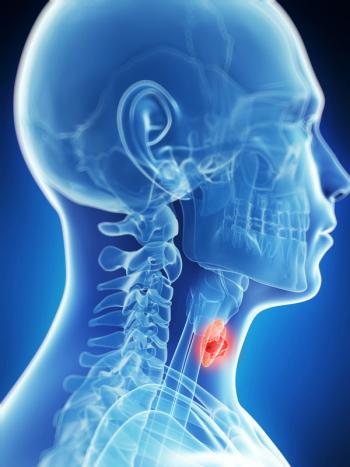
Oncology NEWS International
- Oncology NEWS International Vol 10 No 8
- Volume 10
- Issue 8
Refining Targets to Reduce Late-Appearing Radiation Side Effects in Head and Neck Cancer
ST. LOUIS-Intensity modulated radiation therapy (IMRT) and use of radioprotectant agents may help reduce late-appearing radiation side effects, reported K. S. Clifford Chao, MD. Dr. Chao is associated radiation oncologist, Department of Radiation Oncology at the Mallinckrodt Institute of Radiology, Washington University School of Medicine, St. Louis.
ST. LOUISIntensity modulated radiation therapy (IMRT) and use of radioprotectant agents may help reduce late-appearing radiation side effects, reported K. S. Clifford Chao, MD. Dr. Chao is associated radiation oncologist, Department of Radiation Oncology at the Mallinckrodt Institute of Radiology, Washington University School of Medicine, St. Louis.
Dr. Chao stressed the importance of refining the definition of the radiation target. "The problem with target definition is that no one has published any real guidelines for head and neck IMRT. Articles that talk about the normal N0 neck, for example, point out the lymph nodes; in the real IMRT case we see a less clear situation. If you want to do elective neck radiation, some N0 tissue will be in the region to be treated. We need to settle issues of how to treat such cases," Dr. Chao said.
The situation with postoperative patients is even more complex. "Half of our patients are postop," Dr. Chao said. "How you delineate the target is extremely important. If you draw the target all the way to the skin, our experience is that it is unlikely that the patient will finish the treatment without any break. The skin reaction is likely to be very severe."
A related issue is how to determine the dose. "We prescribe the IMRT dose with biological equivalent dose (BED) correction. The issues of appropriate fraction size, toxicity, and whether at the lower end, 1.5 Gy is enough for the low-risk region need to be addressed further," Dr. Chao said.
Locoregional Failure
Dr. Chao reported data from his institution on patterns of locoregional failure after head and neck IMRT in 108 patients treated from 1997 to 2000, with median follow-up of 27 months. Data for 21 of these patients were excluded due to palliative repeat of radiotherapy or IMRT as boost. The 87 evaluable patients included 40 treated with definitive IMRT and 47 treated with postoperative IMRT. Of the 40 who received definitive IMRT, 26 also received cisplatin (Platinol)-based chemotherapy, and 14 were treated with IMRT alone.
There were 12 locoregional failures. "The majority of local-regional failures were within the high-dose region. We only see about 2.3% marginal failures, but what’s important is that we don’t see failure right next to the parotid gland. There has been concern in the community that sparing the parotid gland would spare the tumor. We didn’t see that," Dr. Chao said.
Effect on Outcomes
Addressing the question of how IMRT with sparing of the salivary gland would translate into overall outcome, Dr. Chao reviewed the Washington University experience in treating oropharyngeal carcinoma from 1970 to 1999. Modalities included definitive conventional radiotherapy (CRT), definitive IMRT, postoperative CRT, and postoperative IMRT. Although IMRT patient numbers were quite small, there was no suggestion of worse outcomes with IMRT for either 2-year locoregional control or 2-year disease-free survival.
Acute grade 3 to 4 mucositis was not significantly different in patients treated with definitive IMRT vs definitive CRT (42% vs 25%, P = 0.134) and was also similar in patients treated with postoperative IMRT vs postoperative CRT (21% vs 20%, P = NS).
Late grade 2 to 3 xerostomia at 12 months post-treatment was significantly less in patients treated with IMRT. Incidence was 30% with definitive IMRT vs 84% with CRT (P < 0.001) and 17% with postoperative IMRT vs 77% with postoperative CRT (P < 0.001).
Noninvasive Approach
Dr. Chao’s group has recently developed a new noninvasive approach that uses IMRT guided by a hypoxia-sensitive tracer to provide higher radiation doses to hypoxic areas of the gross tumor volume (GTV). The researchers hope that this "hypoxia-guided IMRT" strategy will improve local control by overcoming hypoxia-related resistance to radiation.
The effect of adding amifostine (Ethyol) to postoperative IMRT is being studied in patients with squamous cell carcinoma of the oral cavity, oropharynx, hypopharynx, or larynx. IMRT is given at 66 to 52 Gy to the postoperative tumor bed. Amifostine is given at 500 mg SC daily, five times per week. The study objectives are to determine whether adding amifostine will improve xerostomia at 6 months and 12 months after treatment and to determine the cost-benefit ratio for this approach. "We need to see whether adding two very expensive management modalities together can be justified for this type of patient care." Dr. Chao said.
Articles in this issue
Newsletter
Stay up to date on recent advances in the multidisciplinary approach to cancer.



















































































